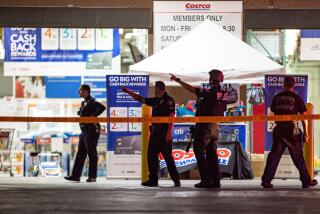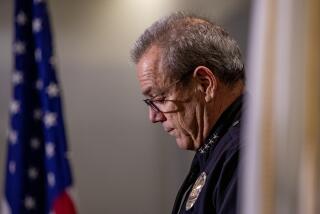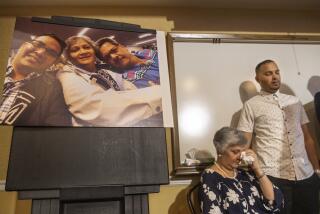Stephon Clark killing still resonates even though cops won’t face criminal charges
The decision by prosecutors not to charge the officers who fatally shot Stephon Clark last year marks a milestone in an incident that has gotten national attention.
But it does not close the case, or its effects, by any means.
Here is a breakdown from reporting by The Times.
The shooting
Clark, who is African American, was killed the night of March 18, 2018.
He was shot at 20 times, and struck at least seven, by two police officers investigating reports of somebody breaking into cars. The officers chased Clark to the backyard of his grandmother’s home, where, authorities say, he turned and advanced toward the officers while holding what they thought was a firearm. Only a cellphone was found at the scene.
In the weeks after the shooting, police released numerous videos that showed parts of the incident, though there remained some disputes about exactly what happened.
Officers responded to the 7500 block of 29th Street after reports of vandalism in the neighborhood. The crew of a Sheriff’s Department helicopter spotted a man in a backyard and directed police officers toward him.
Deputies told police that the man had picked up a “toolbar” and broken a window to a home. The man was then seen running south, toward the front of the house, where he stopped and was looking into another car, police said. Following deputies’ directions, officers entered the frontyard of a home and saw the man along the side of the residence.
Police said that the officers ordered the man to stop and show his hands, but that he ran toward the back of the home. They chased him to the backyard, where, authorities say, he turned and advanced toward the officers and was shot.
The decision
On Saturday, Sacramento County Dist. Atty. Anne Marie Schubert said Officers Terrence Mercadal and Jared Robinet acted legally when they opened fire.
Schubert said the officers acted reasonably because they saw a flash of light near Clark’s hand seconds before Clark advanced toward the officers.
Both officers said they believed Clark had a gun, she said, and responded by opening fire.
Read the entire report prepared for the district attorney’s office here.
The aftermath
Clark’s family is seeking up to $35 million in damages.
The lawsuit claims that the officers violated Clark’s constitutional rights and that they were negligent because they failed to identify themselves as police officers and gave no proper warning to Clark about the use of deadly force before firing their guns.
“Plaintiffs have also been deprived of the lifelong love, companionship, comfort, support, society, care and sustenance of [Clark] and will continue to be so deprived for the remainder of their natural lives,” according to the 31-page court document.
A second review of the incident by state Atty. Gen. Xavier Becerra will probably be released “soon,” his spokeswoman said. The Sacramento Police Department requested the state Department of Justice assessment to allay community concerns about the impartiality of the investigation.
Protests over Clark’s shooting helped spur last year’s landmark police transparency law, Senate Bill 1421, which requires the release of investigative and personnel records in police shootings and some instances of substantiated misconduct.
This year, legislators introduced two competing bills to address use of force by officers in California. Assembly Bill 392 revived an American Civil Liberties Union-backed effort that would make it easier to prosecute police in instances of deadly force. But it could encounter a tough fight as law enforcement unions put forward their own legislation, Senate Bill 230, that focuses on internal training and policies. The second measure has gained traction, with 17 Democrats signing on as coauthors.
More to Read
Start your day right
Sign up for Essential California for news, features and recommendations from the L.A. Times and beyond in your inbox six days a week.
You may occasionally receive promotional content from the Los Angeles Times.






